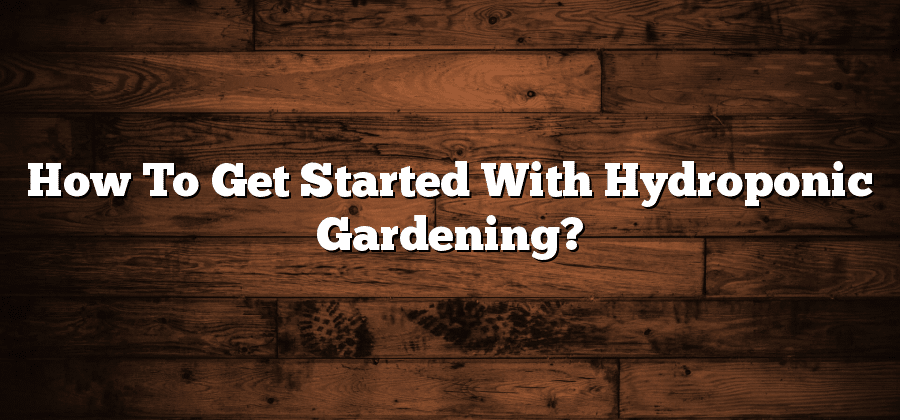Understanding the Basics of Hydroponic Gardening
Hydroponic gardening has gained popularity in recent years as a modern and efficient growing technique. Unlike traditional soil gardening, hydroponics utilizes a water-based nutrient solution to nourish plants directly. This method eliminates the need for soil, providing a cleaner and more controlled environment for plant growth. Whether you are a seasoned gardener looking to explore new techniques or a beginner interested in starting your own indoor garden, understanding the basics of hydroponic gardening is essential.
One of the key advantages of hydroponics is its ability to maximize plant growth in a limited space. With traditional soil gardening, plants require ample room for their roots to spread and gather nutrients. In hydroponics, however, plants are grown in a nutrient-rich solution, allowing their roots to absorb essential elements directly. This allows for more efficient absorption and utilization of nutrients, resulting in faster growth and higher yields. Moreover, the water-based system eliminates the risk of nutrient deficiencies or imbalances commonly encountered in soil gardening, ensuring healthier and more vigorous plants.
Choosing the Right Hydroponic System for Your Needs
Hydroponic gardening is becoming increasingly popular as it offers a convenient and efficient way to grow plants without the use of soil. When it comes to choosing the right hydroponic system for your needs, there are several factors to consider. The first thing to think about is the space you have available. If you have limited space, a small-scale hydroponic system like a nutrient film technique (NFT) system or a vertical garden may be the most suitable choice. On the other hand, if you have ample space, you can opt for larger systems like deep water culture (DWC) or ebb and flow systems.
Another important consideration when choosing a hydroponic system is the type of plants you want to grow. Different plants have different nutrient requirements and grow at varying rates. Some plants, like lettuce and herbs, thrive in smaller, compact systems, while others, like tomatoes or cucumbers, require more space and support. It is essential to research the specific needs of your chosen plants and select a hydroponic system that can accommodate these requirements. This will ensure that your plants grow healthy and produce an abundant harvest.
Selecting the Ideal Location for Your Hydroponic Garden
When it comes to selecting the ideal location for your hydroponic garden, there are a few key factors to consider. First and foremost, you’ll want to choose a spot that receives ample sunlight throughout the day. Since hydroponic gardens rely on artificial lighting to supplement natural sunlight, it’s important to maximize the amount of natural light your plants can receive. Look for an area that is exposed to direct sunlight for at least six to eight hours each day.
In addition to sunlight, you’ll also want to find a location in your home or outdoor space that provides a stable temperature range. Most hydroponic plants thrive in temperatures between 65 and 75 degrees Fahrenheit (18 to 24 degrees Celsius). Avoid areas that are prone to extreme temperature fluctuations, such as near drafty windows or heating vents. A consistent temperature will help ensure optimal growth and prevent any stress on your plants.
Gathering the Essential Tools and Equipment for Hydroponic Gardening
Once you have decided to venture into hydroponic gardening, it is important to gather the essential tools and equipment that will ensure its success. These materials are integral to creating and maintaining a thriving hydroponic system. First and foremost, you will need a quality grow light. Since hydroponic gardens typically lack natural sunlight, it is vital to provide your plants with an alternative light source that can mimic the intensity and spectrum of the sun. LED grow lights are a popular choice for hydroponics as they produce less heat and have a longer lifespan compared to traditional options. Additionally, you will need a reliable water pump and air pump to facilitate nutrient circulation and oxygenation within the system. Without these pumps, the plants’ roots may suffocate and eventually die. A water reservoir with a submersible heater is also necessary to maintain a consistent temperature that ensures optimal nutrient absorption. To measure and maintain the correct levels of nutrients, pH, and temperature, investing in a reliable conductivity and pH meter is recommended. Lastly, you will need a timer to control the light cycle and ensure regular intervals for watering and nutrient solution replenishment. These basic tools and equipment are the foundation of a successful hydroponic garden.
Exploring Different Hydroponic Growing Mediums
When it comes to hydroponic gardening, the choice of growing medium is a critical factor that can greatly affect the success of your plants. With the absence of soil in hydroponic systems, the growing medium serves as a support structure for the plants’ roots and also helps in retaining moisture and providing essential nutrients. There are various types of growing mediums available for hydroponic gardening, each with its own advantages and suitability for different plants and systems.
One commonly used growing medium is rockwool, which is made from melted rock and spun into fibers. Rockwool is preferred for its excellent water retention and aeration properties, as it can hold moisture while also allowing sufficient airflow to the roots. Another popular choice is perlite, a volcanic glass that is crushed into small particles. Perlite is highly porous, providing good drainage and promoting healthy root development. It is often used in combination with other growing mediums to improve water retention and overall drainage.






